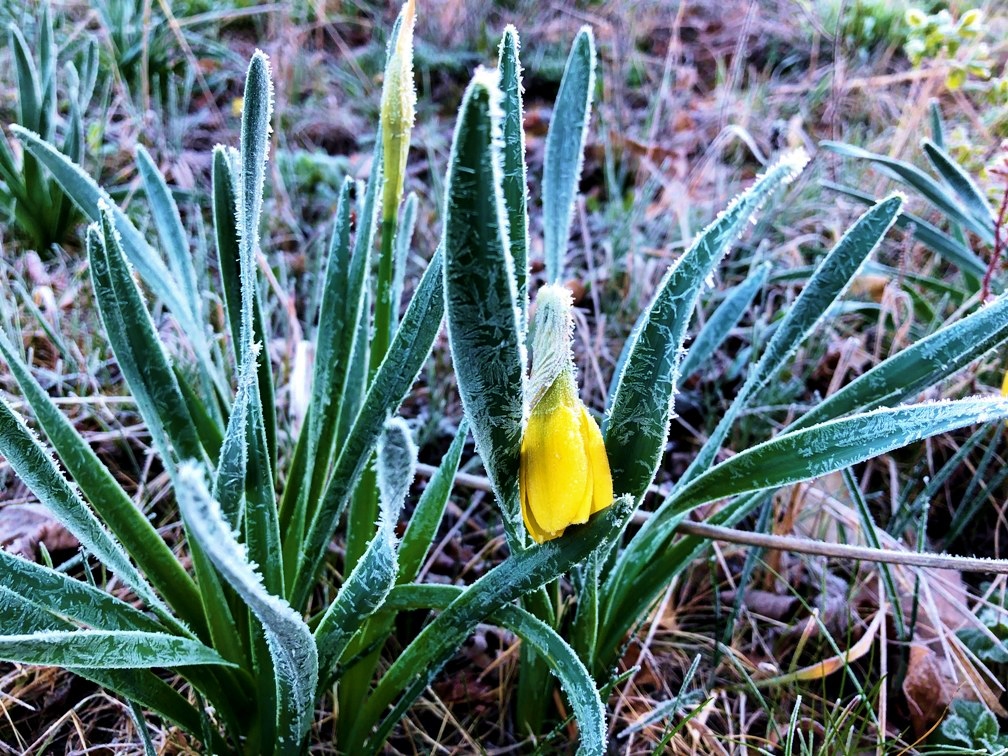Back Home by Chris Hardie
» Download this column as a Word document
» Download the photos that accompany this story
» Chris Hardie’s headshot
The sound of thunder rolled through the valley just as we were headed to bed. Flashes of lightning brightened the dark. The welcome sound of raindrops hit our windows.
Our dog paced, bothered by the storm, but my wife, Sherry, and I drifted off to sleep as the rumbling storm brought much-needed moisture to nourish the ground. About a half-inch fell overnight, enough to water our garden, spring flowers and new grass seeding.

Spring in the Upper Midwest is always a dramatic swing as we see-saw between the last vestiges of winter’s icy grip to early samples of summer heat — and with everything else between. I vowed this past winter to not remove the snowplow from my truck until May 1, fearing premature storage would bring an unwanted April blizzard.
We didn’t receive any snow this April — unlike the storms of recent years — but we surely have been dry and windy. Even with the late-April rain, we are almost 2 inches less than normal for the month.
The winds come from the clash of warming weather with cold winter temperatures, creating strong air-pressure gradients. The La Crosse office of the National Weather Service reported that every day through April 28, La Crosse had a gust of at least 15 miles per hour or more. There were eight days in April when the average wind speed was in double digits.
We had several days of 80 degrees earlier in the month, which prompted our lilacs to begin budding. Then a frosty morning arrived late in the month with temperatures in the teens.
It’s been several years since we’ve had a flush of lilac blooms. Mother’s Day weekend in 2020 froze in a polar plunge; another one at the end of May left us only a few blooms to enjoy. A few weeks will reveal what this year will bring to one of my favorite spring scents.
We’ve already planted some seeds in our new vegetable and fruit garden, but it’s still too early to set out plants as well as for some vegetable seeds.
That hasn’t stopped farmers from beginning corn planting. Soil temperatures in Wisconsin hovered at about that magical 50-degree mark, at least in the southern half of the state. The National Weather Service reported April 29 that the soil temperature in Marshfield — located near the geographic center of the state — was 48 degrees at 2 inches and 46 degrees at 40 inches.
Many current corn fields are planted no-till with large planters that can sweep through a field in minutes. That’s a far cry from 30 years ago when Dad struggled with a used eight-row corn planter that always seemed to break down during planting time. And that was an upgrade from the four-row planter.
I remember one dry and windy spring day when I was helping with the planting. Dad was probably fixing the corn planter as I disced one field after another on a tractor without a cab. Many times I looked back into a cloud of dust. It was a long day, with only a break for lunch and to refuel. My eyes hurt from the grit.
The planter held up that day; many acres of corn were sown into the sandy loam. Planting is always a gamble. But a few days later we had rain, a spring blessing for the fields that soon germinated.
I thought about that year the other night as the rain fell outside. It was probably the last time I helped Dad with a full planting season. If he were still around, he too would have welcomed the rain. We need more, but sometimes we just need to appreciate what we have at the moment.
And that’s just enough to keep us going. In many ways that’s the story of farming.
Chris Hardie spent more than 30 years as a reporter, editor


